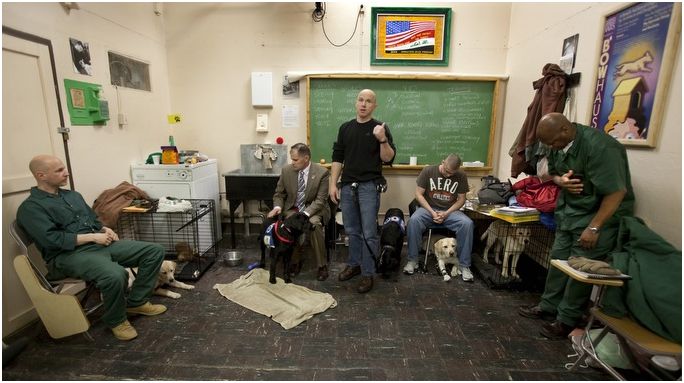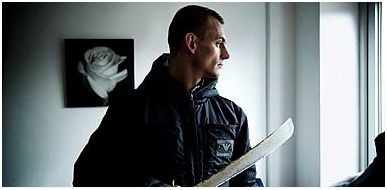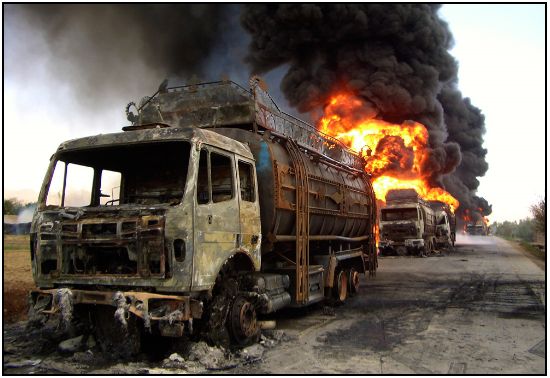Notes
War, PTSD, Soldiers, and Prison
Ever since Change.org published With 140,000 Veterans in Prison, We Can Do Better last Veteran’s Day, I have been aware of stories about the links between violence and suffering abroad with violence and suffering within US communities.
Two recent stories have surfaced – one from either side of the Atlantic – which illustrate two common scenarios for men and women returning from service in war or conflict. The first is clinical depression in the form of Post-Traumatic Stress Disorder; the second is clinical depression in the form of addiction and aggressive behaviors.
New York Times photographer Stephen Crowley visited Mid-Orange Correctional Facility in Warwick, N.Y. to document the Puppies Behind Bars program. The program serves as rehabilitation for inmates in the form of responsibility, “softening up” and purpose in the direct service to outside communities. One of the growing communities to benefit from personally-trained service dogs are America’s war veterans.
But for the dogs, the above image is reminiscent of war photographs throughout the modern era. How many times have we seen marines sat up against a berm or compound-wall catching respite, shade, or sleep? Those moments are of silence, the absence of battle, and solitude in thought or dream. But in this photo, the compositional isolation of the two vets, not engaged, one not even glancing at his dog, is a cue to the social marginalization both vets and prisoners can be subject to on return to society. This photo is included in the New York Times slide show of Crowley’s photographs published in April of this year.
The Times Newspaper (UK) recently published From Hero to Zero reporting the fortunes of three ex-soldiers who have done time in prison. Addiction and aggression issues leading to such incarceration are often the result of either undiagnosed or untreated PTSD. Estimates of the exact number of military veterans in UK prisons vary wildly and the lack of hard numbers is one of the biggest stumbling blocks for understanding and working to improve the prospects of the veteran/prisoner population. The Times itself notes conflicting estimates of three to eight percent of the British prison population are from British armed forces.
The soldier pictured above, former British Army private Michael Clohessy, sleeps with the sword he holds under his pillow. Such an image is likely to set off alarms — many people choose to keep baseball bats under beds for protection, but a sword? This choice of weapon (handguns and rifles are strictly controlled in Britain) speaks to Clohessy’s anxiety and the state-trained violence he took on as a British Army recruit. One can only guess at his exposure to harassment within the UK prison system. And now, pictured stripped of a soldier’s arsenal, Clohessy’s make-do weaponry brings him some solace, perhaps protection, but brings us concern and a troubling glimpse of a life riddled with PTSD.
The title of the Times piece suggests it all – From Hero to Zero. We freely project the character of a person based upon our knowledge of his or her publicly performed actions. But heroes are never heroes, and zeroes are never zeroes; they are stereotypes. Stereotypes are often benign but sometimes damaging and paralyzing to good judgment.
Our prisons are filled with a wide variety of people with a wide variety of faults, competencies, potential, and histories. For the most part, the authorities are aware of this, although there is some question as to public awareness.
Is it in our interest to think of the diversity of populations in prison? Does this affect how we consider prisons and prison reform?
What do we need to see (photography?) – as well as read – to think of prisons in more reflexive ways?




Reactions
Comments Powered by Disqus